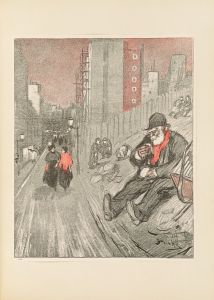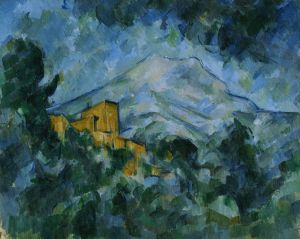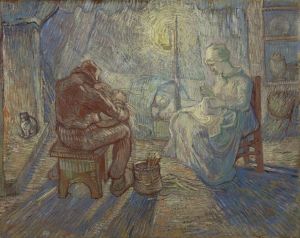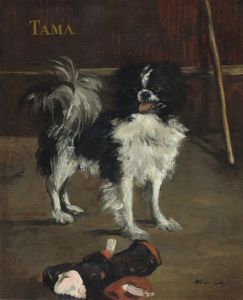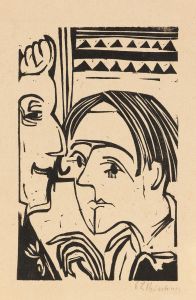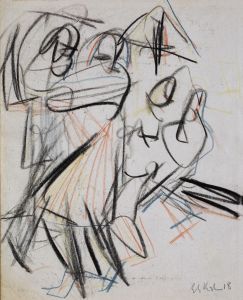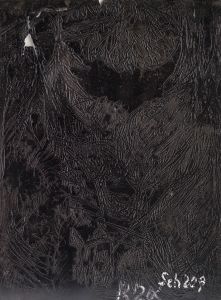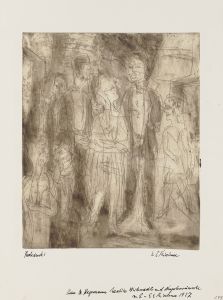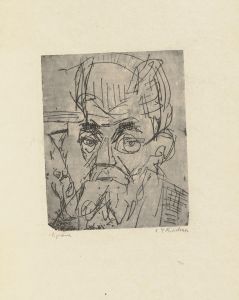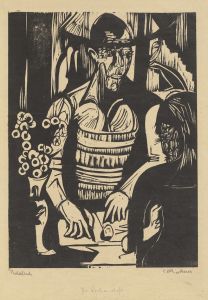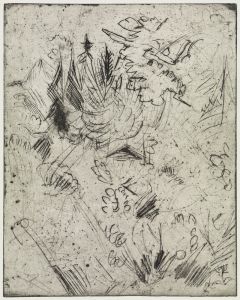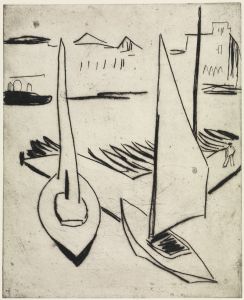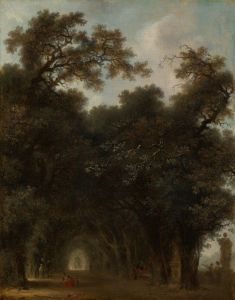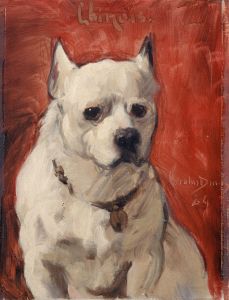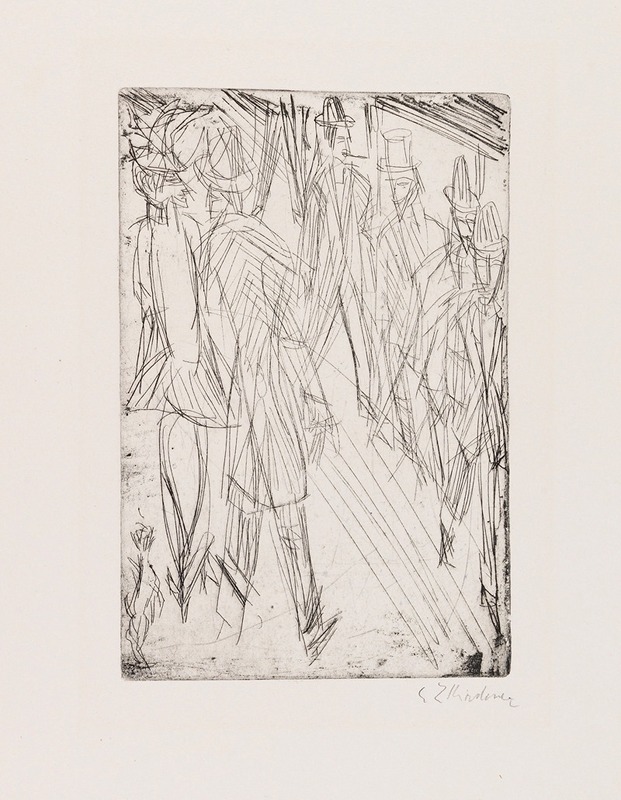
Straßenszene mit Hündchen – Die Vorübergehenden
A hand-painted replica of Ernst Ludwig Kirchner’s masterpiece Straßenszene mit Hündchen – Die Vorübergehenden, meticulously crafted by professional artists to capture the true essence of the original. Each piece is created with museum-quality canvas and rare mineral pigments, carefully painted by experienced artists with delicate brushstrokes and rich, layered colors to perfectly recreate the texture of the original artwork. Unlike machine-printed reproductions, this hand-painted version brings the painting to life, infused with the artist’s emotions and skill in every stroke. Whether for personal collection or home decoration, it instantly elevates the artistic atmosphere of any space.
Ernst Ludwig Kirchner was a prominent German expressionist painter and one of the founding members of the artist group Die Brücke (The Bridge), which played a pivotal role in the development of modern art in the early 20th century. Kirchner's work is characterized by its bold colors, dynamic compositions, and a focus on urban life and the human figure. One of his notable works is "Straßenszene mit Hündchen – Die Vorübergehenden" (Street Scene with Little Dog – The Passersby).
This painting is part of Kirchner's renowned series of Berlin street scenes, which he created during the years leading up to World War I. These works capture the bustling energy and vibrant life of the city, reflecting both the excitement and the alienation of modern urban existence. Kirchner moved to Berlin in 1911, and the city's dynamic atmosphere had a profound impact on his artistic output. The Berlin street scenes are considered some of his most significant contributions to the expressionist movement.
"Straßenszene mit Hündchen – Die Vorübergehenden" exemplifies Kirchner's expressionist style, characterized by exaggerated forms, vivid colors, and a sense of movement. The painting depicts a busy urban street, populated by figures that seem to be in constant motion. The presence of a small dog adds a touch of everyday life to the scene, grounding the otherwise frenetic composition. Kirchner's use of color is particularly striking; he employs a palette of bold, contrasting hues to convey the vibrancy and chaos of city life.
The figures in the painting are elongated and stylized, a hallmark of Kirchner's approach to the human form. This distortion serves to emphasize the emotional and psychological undercurrents of the scene, capturing the tension and excitement of urban living. The composition is dynamic, with diagonal lines and overlapping forms creating a sense of depth and movement. Kirchner's brushwork is loose and expressive, further enhancing the sense of immediacy and energy.
Kirchner's Berlin street scenes, including "Straßenszene mit Hündchen – Die Vorübergehenden," are often interpreted as reflections of the artist's own experiences and perceptions of modern life. They convey a sense of both fascination and unease, capturing the dual nature of the city as a place of opportunity and alienation. These works also reflect the broader themes of the expressionist movement, which sought to convey subjective emotions and experiences through bold, innovative artistic techniques.
The painting is part of Kirchner's exploration of the modern metropolis, a theme that resonated with many artists of the time. His work provides valuable insight into the cultural and social dynamics of early 20th-century Berlin, as well as the broader artistic trends of the period. Kirchner's street scenes remain influential, offering a vivid snapshot of a rapidly changing world and the complexities of urban life.
"Straßenszene mit Hündchen – Die Vorübergehenden" is a testament to Kirchner's skill as an artist and his ability to capture the essence of his surroundings. Through his use of color, form, and composition, Kirchner creates a powerful visual narrative that continues to resonate with audiences today. His work not only reflects the spirit of his time but also contributes to the ongoing dialogue about the role of art in society and the ways in which it can express the human experience.





